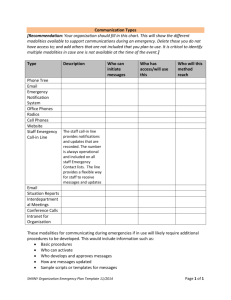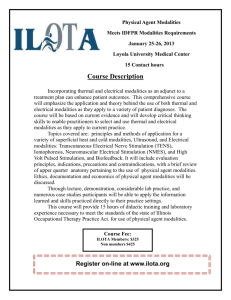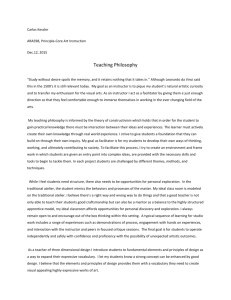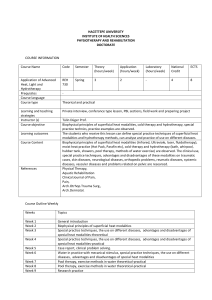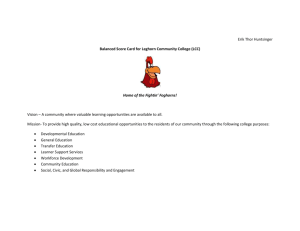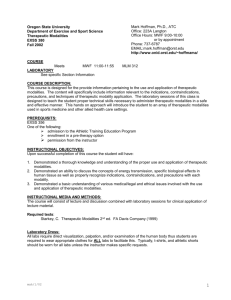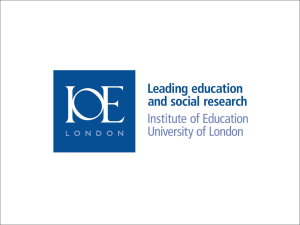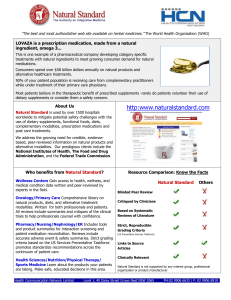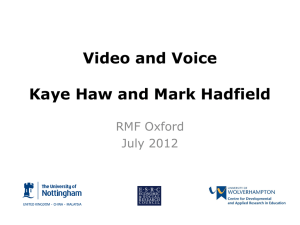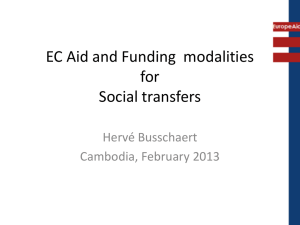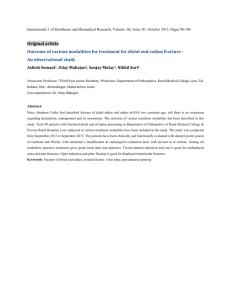PHT 2220C - Florida State College at Jacksonville
advertisement
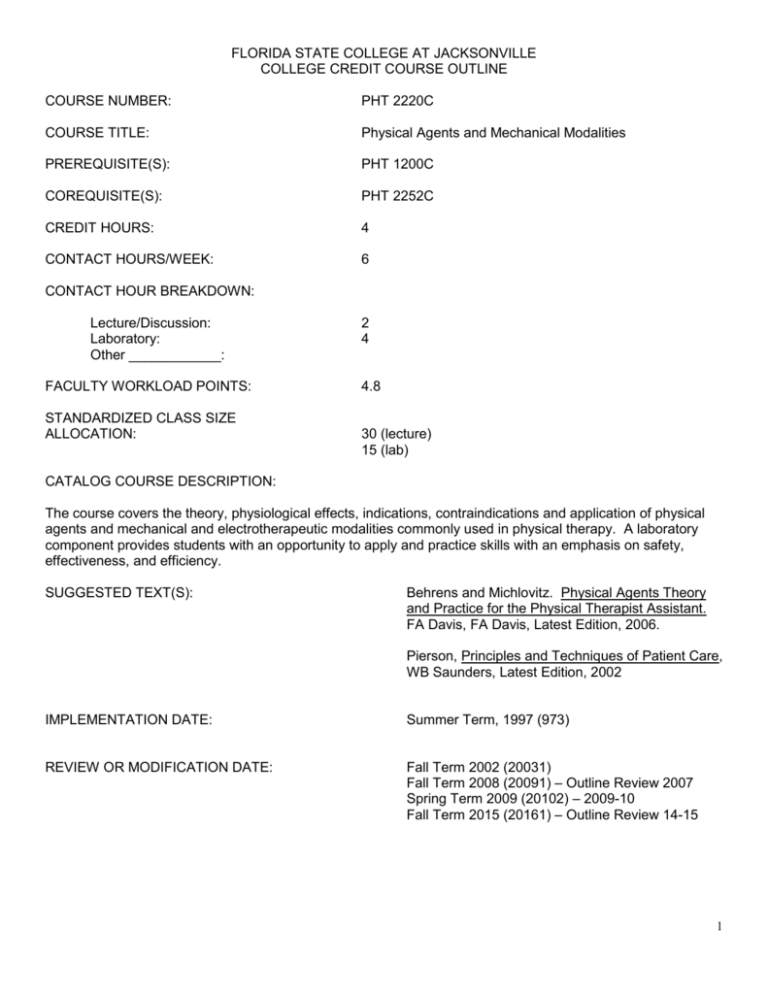
FLORIDA STATE COLLEGE AT JACKSONVILLE COLLEGE CREDIT COURSE OUTLINE COURSE NUMBER: PHT 2220C COURSE TITLE: Physical Agents and Mechanical Modalities PREREQUISITE(S): PHT 1200C COREQUISITE(S): PHT 2252C CREDIT HOURS: 4 CONTACT HOURS/WEEK: 6 CONTACT HOUR BREAKDOWN: Lecture/Discussion: Laboratory: Other ____________: FACULTY WORKLOAD POINTS: STANDARDIZED CLASS SIZE ALLOCATION: 2 4 4.8 30 (lecture) 15 (lab) CATALOG COURSE DESCRIPTION: The course covers the theory, physiological effects, indications, contraindications and application of physical agents and mechanical and electrotherapeutic modalities commonly used in physical therapy. A laboratory component provides students with an opportunity to apply and practice skills with an emphasis on safety, effectiveness, and efficiency. SUGGESTED TEXT(S): Behrens and Michlovitz. Physical Agents Theory and Practice for the Physical Therapist Assistant. FA Davis, FA Davis, Latest Edition, 2006. Pierson, Principles and Techniques of Patient Care, WB Saunders, Latest Edition, 2002 IMPLEMENTATION DATE: Summer Term, 1997 (973) REVIEW OR MODIFICATION DATE: Fall Term 2002 (20031) Fall Term 2008 (20091) – Outline Review 2007 Spring Term 2009 (20102) – 2009-10 Fall Term 2015 (20161) – Outline Review 14-15 1 COURSE TOPICS I. II. III. IV. IV. CONTACT HOURS __PER TOPIC__ Principles and Basic Concepts A. Types of pathologies and trauma B. Stages of inflammation and repair C. Patient assessment Physical Agents A. Athermal agents B. Crotherapy C. Hydrotherapy D. Light agents E. Sound agents F. Thermotherapy Electrotherapeutic Modalities A. Electrical Muscle Stimulation (EMS) B. Electrical Stimulation for Tissue Repair (ESTR) C. Functional Electrical Stimulation (FES) D. High Volt Pulsed Current (HVPC) E. Neuromuscular Electrical Stimulation (NMES) F. Transcutaneous Electrical Nerve Stimulation (TENS) Mechanical modalities A. Compression therapies B. Mechanical motion devices (CPM) C. Traction devices Skill Integration A. Coordination, Communication and Documentation B. Patient/caregiver Education C. Implementing and adjusting interventions within the plan of care 6 36 ( 6) ( 6) (6) (6) (6) (6) 18 (3) (3) (3) (3) (3) (3) 24 ( 6) ( 6) (12) 6 2 PROGRAM TITLE: Physical Therapist Assistant COURSE TITLE: Physical Agents and Mechanical Modalities CIP NUMBER: 1351080601 Program Frameworks can be found at the following website: http://www.fldoe.org/workforce/dwdframe/ 3 Florida State College at Jacksonville Course Learning Outcomes and Assessment SECTION 1 Semester Credit Hours (Credit): Contact Hours (Workforce) Physical Agents and Mechanical Modalities Course Prefix and Number: PHT 2220C Course Title: 4 SECTION 2a (To be completed for General Education courses only.) TYPE OF COURSE (Place an “X” in the box next to those that are applicable.) General Education Core (If selected, core discipline area will be identified in Section 4.) General Education (If selected, you must also complete Section 4, Section 5, and Section 8) SECTION 2b TYPE OF COURSE (Place an “X” in the box next to those that are applicable.) A.A. Elective X A.S. Required Course A.S. Professional Elective A.A.S. Required Course A.A.S. Professional Elective Technical Certificate PSAV/Clock Hour/Workforce Upper Division/Bachelors Development Education Apprenticeship Other: If selected, use this space to title “other” option. SECTION 3 INTELLECTUAL COMPETENCIES (Place an “X” in the box next to those that are applicable.) X Reading X Speaking X Critical Analysis X Qualitative Skills X X Writing X Listening X Information Literacy X Ethical Judgement X Scientific Method of Inquiry Working Collaboratively SECTION 4 (To be completed for General Education courses only.) GENERAL EDUCATION DISCIPLINE AREA (Place an “X” in the box next to those that are applicable.) Communications Humanities Mathematics Social and Behavioral Sciences Natural Sciences SECTION 5 (To be completed for General Education courses only.) GENERAL EDUCATION LEARNING OUTCOME AREA (Place an “X” in the box next to those that are applicable.) Communication Critical Thinking Information Literacy Scientific and Quantitative Reasoning Global Sociocultural Responsibility SECTION 6 LEARNING OUTCOMES TYPE OF OUTCOME (General Education, Course or Program) Exhibit safe and appropriate administration of physical agents and modalities including infection control and patient positioning Course, Program Exhibit appropriate communication with patients, patient families to explain the rationale and procedure of the intervention and gain consent for treatment. Course, Program METHOD OF ASSESSMENT Written Exam or Practical Exam or Written feedback from clinical instructor based on student’s performance during the clinical experience Written Exam or Practical Exam or Written feedback from clinical instructor based on student’s performance during the clinical experience 4 SECTION 6 (Continued) LEARNING OUTCOMES Evaluate changes in physiological state during provision of treatment agents and modalities and support the significance of this change Decide if patient outcomes as a result of selected physical agents/modalities is desirable or undesirable and modify intervention as appropriate Support the role of physical agents and modalities in a physical therapy plan of care and the scope of a PTA’s practice as it relates to these interventions TYPE OF OUTCOME (General Education, Course or Program) Course, Program Course, Program Course. Program Participate in discharge planning and follow up care Course, Program Ability to correctly site indications and contraindications for therapeutic exercise Course, Program Demonstrate safe procedures for transport and transfer of patient Course, Program Describe the fire safety and evacuation procedures Course, Program Monitor and record vital signs Course, Program Describe the normal anatomical alignment of the human body Course, Program METHOD OF ASSESSMENT Written Exam or Practical Exam or Written feedback from clinical instructor based on student’s performance during the clinical experience or Skills Check-offs Written Exam or Practical Exam or Written feedback from clinical instructor based on student’s performance during the clinical experience or Skills Check-offs Written Exam or Practical Exam or Written feedback from clinical instructor based on student’s performance during the clinical experience or Skills Check-offs Written Exam or Practical Exam or Written feedback from clinical instructor based on student’s performance during the clinical experience or Skills Check-offs Written tests-simulated case scenarios; critical thinking questions; pro-bono clinic discharge patient input and feedback Lab practical with oral and written answers being assessed with rubric Use of rubrics during course; use of clinical performance instruments during clinical internships Use of rubrics to asses during lab practicals; use of human simulator and rubric Written exam/multiple choice SECTION 7 Faculty name(s): Dr. Sean McClafferty Date: 4/30/15 CS20150615 5
